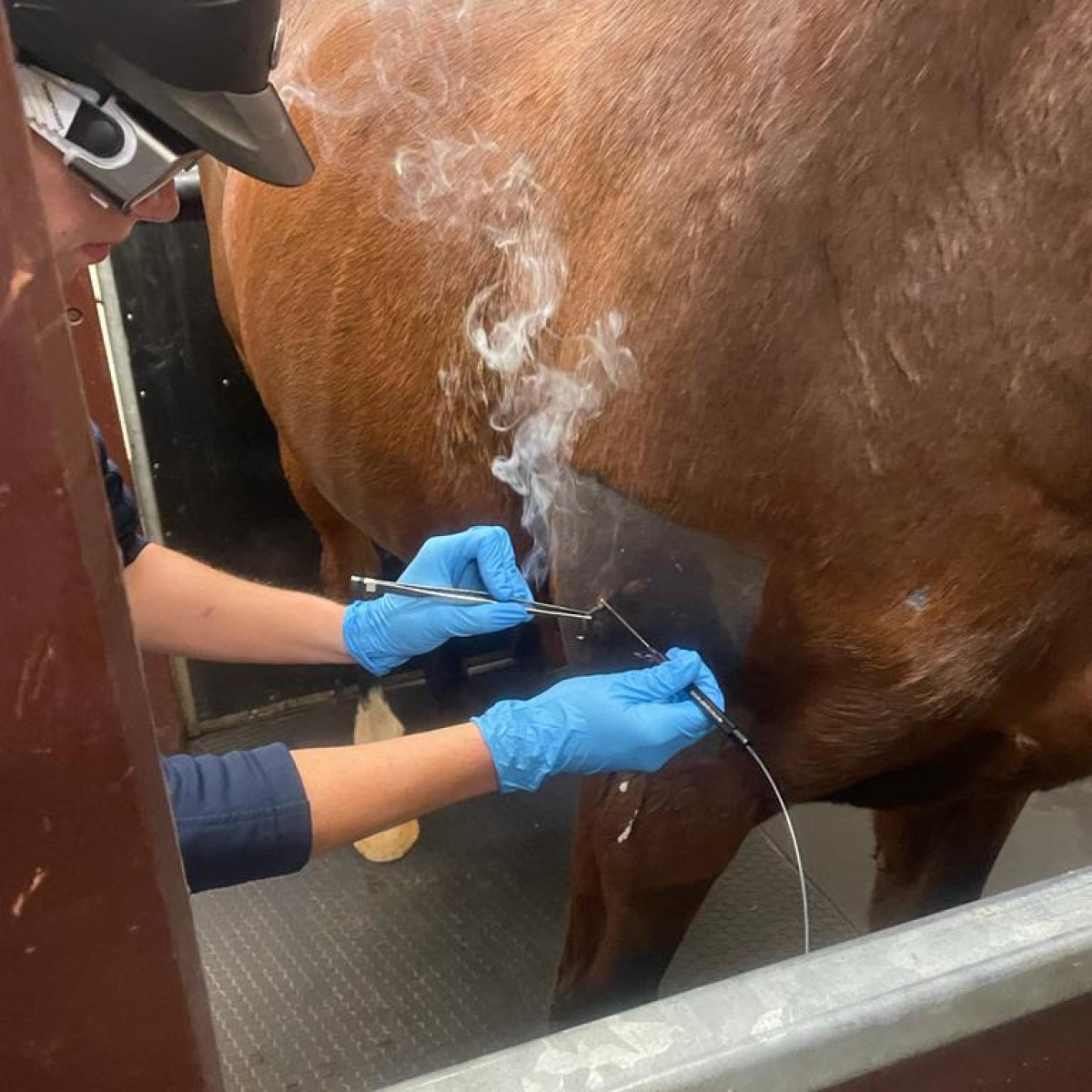Exploring the Holistic Technique of Equine Therapy for Individual Development
Exploring the Holistic Technique of Equine Therapy for Individual Development
Blog Article
Exactly How Laser Therapy in Horse Therapy Is Reinventing Veterinary Take Care Of Steeds
Laser treatment has emerged as a transformative strategy in equine vet care, providing a non-invasive option that accelerates healing and enhances total health and wellness. Leveraging accurate light wavelengths, this cutting-edge therapy boosts cellular regeneration, lowers swelling, and mitigates discomfort. Its effectiveness prolongs from musculoskeletal injuries to persistent ailments like osteo arthritis, substantially improving mobility and life quality for steeds. The portability and flexibility of laser treatment devices additionally underscore their growing necessity among vets. As we explore the intricate technicians and real-world successes, the profound influence on equine medical techniques ends up being significantly apparent.
Recognizing Laser Treatment

The technology behind laser therapy is grounded in the principle of photochemistry, where photons are taken in by chromophores within cells, bring about enhanced ATP production and modulation of responsive oxygen varieties (Equine Therapy). This, consequently, promotes cellular proliferation, lowers swelling, and speeds up recovery. Veterinary professionals use different sorts of lasers, consisting of low-level lasers (LLLT) and high-power Class IV lasers, relying on the specific therapeutic goals and the nature of the equine condition being treated
Various laser wavelengths and power setups are carefully picked to target numerous cells midsts and achieve desired medical outcomes. Safety and security methods are paramount, as inappropriate use can bring about thermal damages or suboptimal restorative impacts. Thus, an extensive understanding of laser therapy's devices and applications is crucial for its reliable execution in equine veterinary practice.
Advantages for Equine Health
The myriad advantages of laser treatment for equine health and wellness include boosted recovery, discomfort reduction, and enhanced movement. This sophisticated treatment modality leverages particular wavelengths of light to permeate tissues, promoting mobile function and advertising quick tissue repair work. The non-invasive nature of laser treatment ensures very little stress and anxiety and pain for the equine, assisting in a smoother recovery procedure.
Improved healing is one of the primary benefits, as laser treatment speeds up cellular regeneration and collagen synthesis. Pain reduction is accomplished with the anti-inflammatory impacts of laser treatment, which lowers swelling and decreases the manufacturing of pain-inducing chemicals.
By reducing swelling and discomfort, and improving tissue repair work, laser therapy aids in restoring joint function and muscle flexibility. Hence, laser treatment stands as a transformative tool in modern equine vet care.
Common Problems Dealt With
Laser treatment has arised as a functional treatment option for a selection of common equine problems. Additionally, laser treatment is efficient for problems like osteo arthritis, where it aids mitigate joint swelling and advertise cells repair.
Wound monitoring is an additional area where laser treatment has revealed significant pledge. Chronic wounds or slow-healing abscess can be particularly difficult in horses, however laser therapy improves mobile regeneration and enhances blood flow, thus quickening the healing process. Laser treatments have actually been successfully utilized in taking care of hoof conditions such as laminitis and abscesses, easing pain and advertising faster recuperation.

Modern Technology Behind Laser Treatment
Past the myriad conditions treatable with laser therapy, the innovation itself merits closer examination. At the heart of laser treatment is the usage of particular wavelengths of light to permeate tissues and elicit biological reactions. These wavelengths, generally ranging from 600 to 1000 nanometers, are uniquely soaked up by chromophores in the skin, muscle mass, and other cells, prompting a waterfall of mobile events.
Laser devices made use of in vet medicine frequently utilize low-level laser treatment (LLLT) or cool laser therapy. Unlike high-powered surgical lasers, these tools operate try these out at lower power levels, enhancing therapeutic benefits while reducing thermal damage. The energy from the laser light boosts adenosine triphosphate (ATP) manufacturing, enhances mobile metabolic process, and increases tissue repair service procedures.

Success Stories and Case Studies

Showcasing the concrete benefits of laser therapy, many success tales and instance researches brighten its transformative influence on equine health. One such case involves a thoroughbred racehorse suffering from chronic tendonitis. Conventional treatments yielded minimal improvement, but after incorporating laser treatment right into the routine, the equine displayed considerable reductions in inflammation and pain within weeks, ultimately returning to competitive racing.
Another engaging instance includes a dressage equine diagnosed with severe neck and back pain, restricting its performance. A veterinary team employed low-level laser therapy (LLLT) to target the swollen locations, causing marked improvement in adaptability and a remarkable decline in discomfort. check my source Over several sessions, the horse reclaimed its peak type, showcasing the efficacy of laser treatment in resolving bone and joint issues.
Additionally, a research carried out at a leading equine clinic examined 50 steeds with various soft cells injuries treated with laser therapy. The results stood out: 85% of the equines showed sped up healing times and boosted flexibility. These situations underscore the convenience and efficiency of laser therapy in equine medication, providing a non-invasive, scientifically-backed approach to improving recovery and performance in horses.
Verdict
Laser treatment is revolutionizing equine vet care by giving a non-invasive treatment that accelerates recovery, lowers inflammation, and alleviates pain. With its efficiency in dealing with a variety of problems, from find more info musculoskeletal injuries to chronic disorders like osteo arthritis, this innovation considerably boosts equine wellness and movement. The mobility and flexibility of laser treatment further underscore its transformative effect on veterinary techniques, strengthening its duty as an important device in modern equine health care.
Report this page